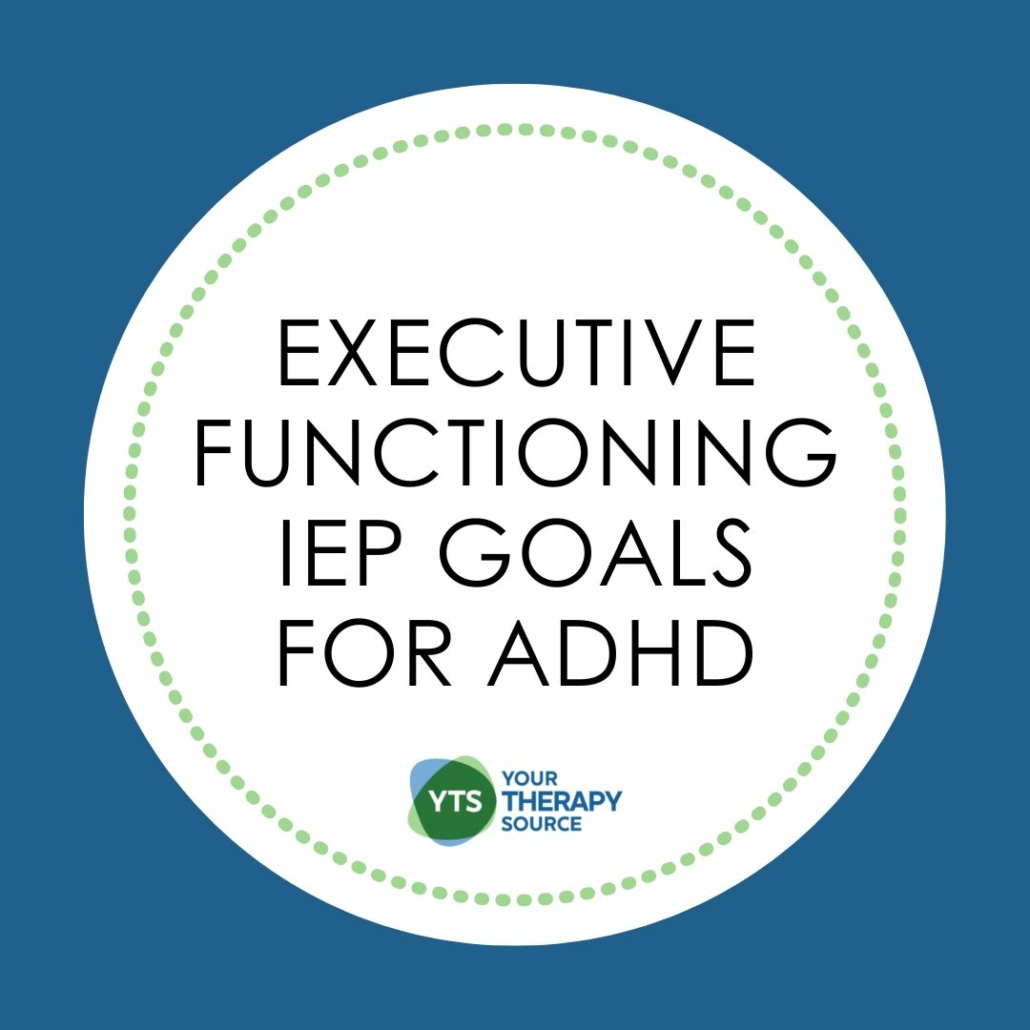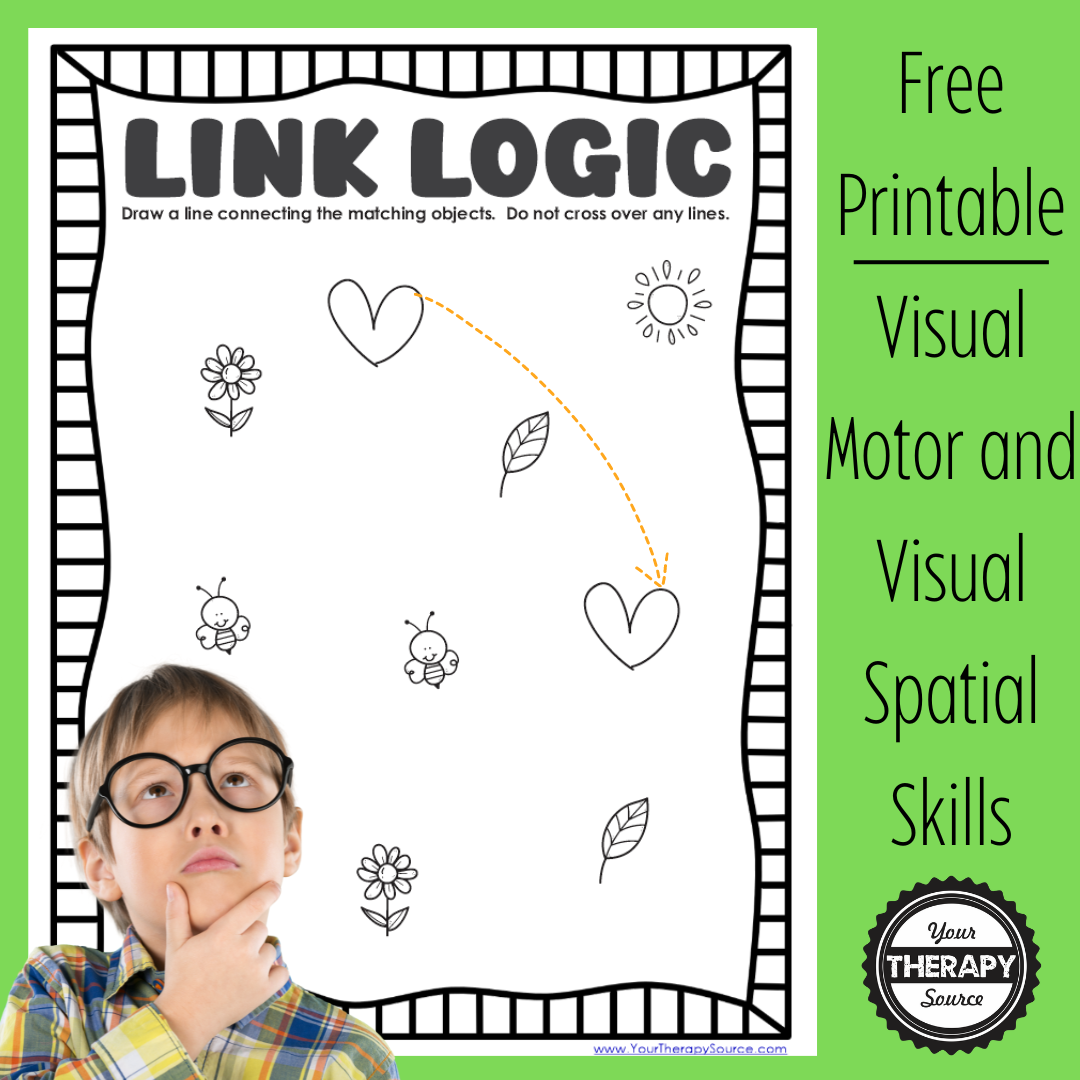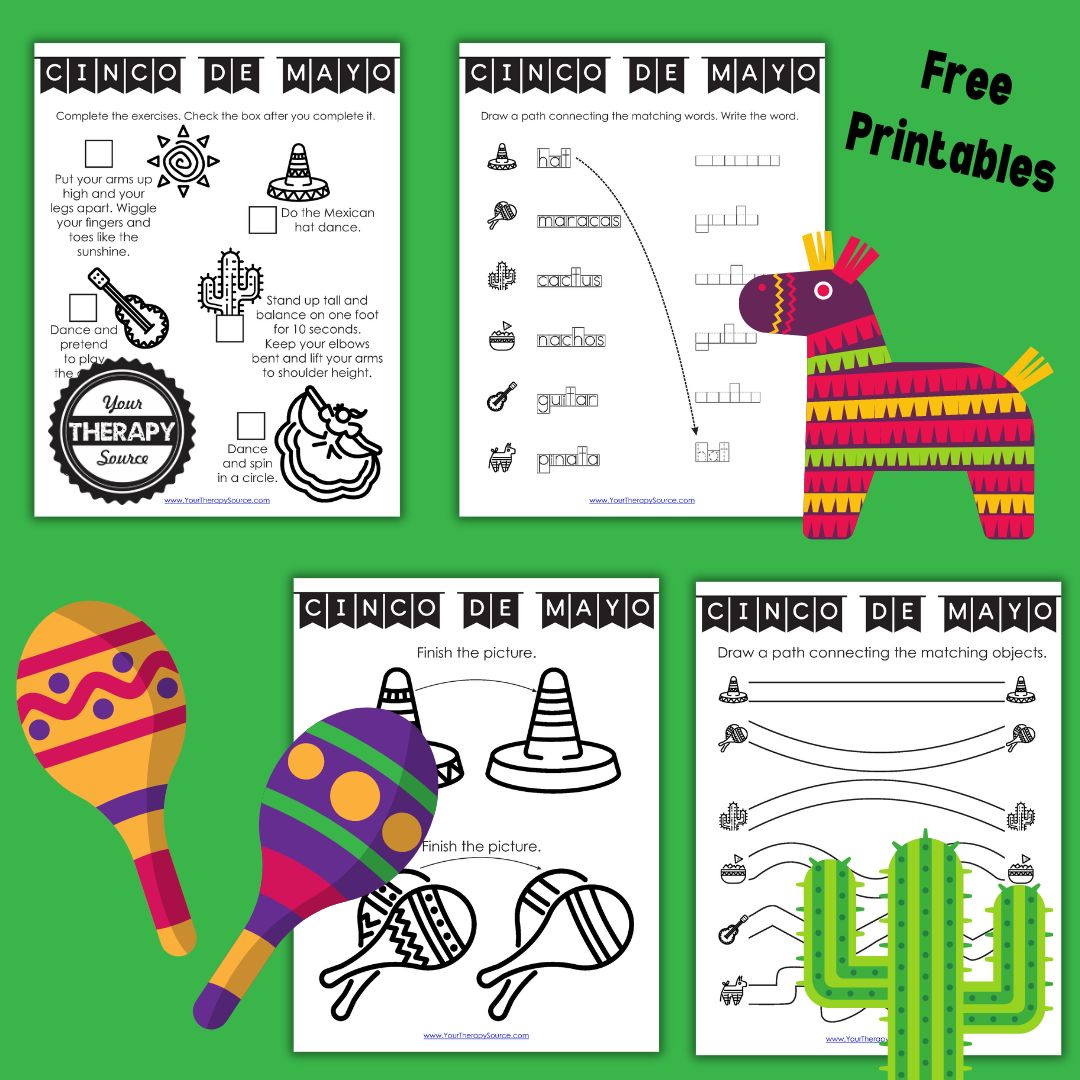Executive Functioning IEP Goals for ADHD
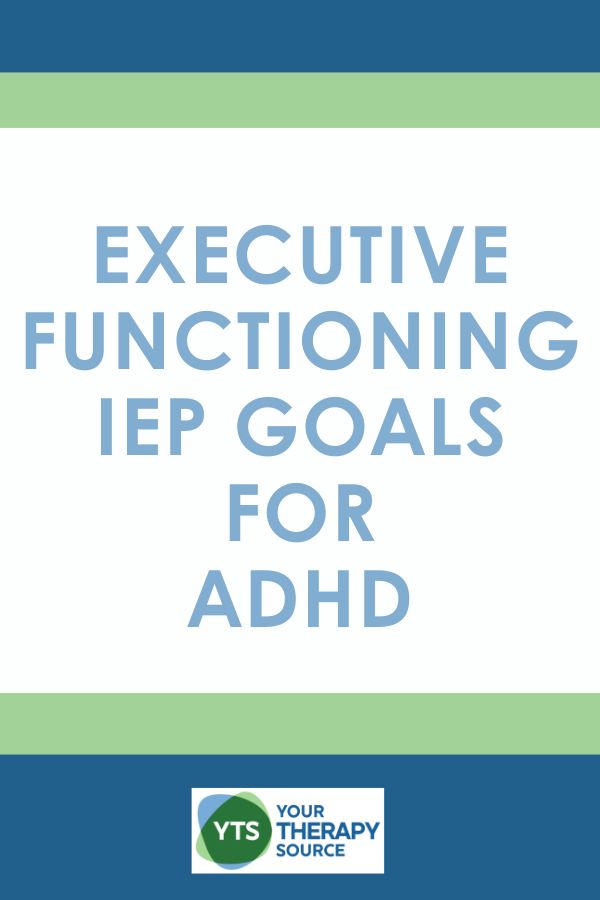
Developing effective Individualized Education Program (IEP) goals for students with Attention Deficit Hyperactivity Disorder (ADHD) is crucial to harness their academic and social potentials. Learn more about the specific area of executive functioning IEP goals for ADHD. Educators, parents, and specialists can get ideas about measurable and impactful objectives that cater to individual needs. Executive functioning skills are fundamental for success in academic and everyday activities, and these can be significantly challenged in students with ADHD.
Executive Functioning Skills at School
Executive functioning skills encompass the mental processes that enable us to plan, focus attention, remember instructions, and juggle multiple tasks successfully. For students with ADHD, these skills often require targeted support through their education plan. Here are some key executive functions, their definitions, and their relevance in a school setting:
- Planning and Organization: Ability to create a roadmap to complete tasks. Planning helps students foresee and sequence their academic tasks, enhancing their ability to complete schoolwork efficiently.
- Working Memory: Involves holding information in mind while performing complex tasks. Essential for following multi-step instructions or solving math problems in one’s head.
- Inhibitory Control (Impulse Control): The ability to suppress impulses and think before acting. Critical for maintaining classroom behavior conducive to learning.
- Cognitive Flexibility: Ability to switch between different concepts or adapt to changing rules. Helps students adjust to new settings or transitions between different academic subjects.
- Self-Monitoring: This skill allows students to evaluate their performance and adjust their behavior accordingly. It’s vital for understanding personal academic strengths and weaknesses.
Executive Functioning IEP Goals for ADHD – Organization Skills
Organizational skills are essential for academic success. Students with ADHD might struggle with organizing their tasks, leading to incomplete assignments or missed deadlines. Here are examples of SMART IEP goals to enhance organization:
- Goal 1: By the end of the school year, the student will organize their assignments and materials for each subject with 90% accuracy, as measured by teacher observation and weekly folder checks.
- Goal 2: The student will use a planner to track homework and project due dates, accurately logging entries for 4 out of 5 days a week, as verified through planner checks by the teacher.
- Goal 3: The student will check and update their digital task manager or physical planner at the beginning and end of each school day, achieving consistent updates in 90% of school days, as monitored by teacher observation and periodic planner reviews.
- Goal 4: By the middle of the school year, the student will independently categorize and file their completed and ongoing assignments in designated folders for each subject, maintaining this system with at least 85% accuracy, as determined by random checks by the special education teacher.
- Goal 5: The student will develop a routine for a weekly review with their teacher to assess the organization of their locker and backpack, aiming for improvement and maintaining an organized state in 80% of the reviews, as documented through a teacher-student checklist.
- Goal 6: Within six months, the student will utilize visual reminders (stickers, colored tabs) to prioritize daily tasks and separate completed work from pending assignments, with the student successfully sorting and prioritizing tasks on their own in at least 75% of observed instances.
- Goal 7: By the end of the school year, the student will demonstrate the ability to break down larger projects into smaller, manageable steps, listing these steps in their planner and completing each step by the predetermined deadlines in 80% of project opportunities, as tracked by project submission records and planner entries.
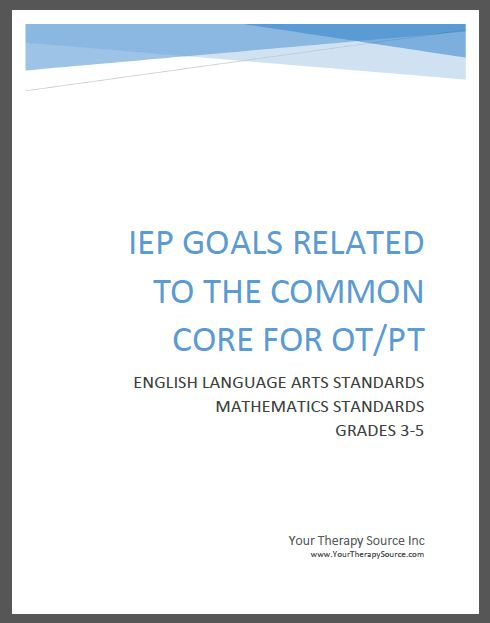
IEP Goals Related to the Common Core for OT/PT Grades 3-5
Executive Functioning IEP Goals for ADHD – Impulse Control
Impulse control is crucial for maintaining appropriate classroom behavior and engaging in social interactions. Here are measurable IEP goals for improving impulse control:
- Goal 1: The student will raise their hand and wait to be called on before speaking in class, achieving this in 80% of opportunities, as measured by teacher charting over a month.
- Goal 2: When feeling upset or angry, the student will use positive self-talk strategies to manage emotions in 75% of observed instances, as recorded by the special education teacher.
- Goal 3: The student will follow classroom rules regarding turn-taking in group activities, successfully waiting for their turn without interrupting in 85% of group sessions, as observed and recorded by the teacher over a three-month period.
- Goal 4: During unstructured times such as recess or lunch, the student will engage in appropriate play, refraining from interrupting others’ games or conversations, in 80% of observed instances, with progress monitored through daily behavioral checklists completed by supervising staff.
- Goal 5: The student will use designated “cool down” strategies such as deep breathing or a short walk, to manage impulsive reactions to stressful or frustrating situations in class, applying these strategies effectively in 70% of relevant situations, as noted by teacher and counselor observations.
These goals are designed to help the student develop better control over their impulses, which is crucial for improving both their academic performance and social interactions.
Executive Functioning IEP Goals for ADHD – Task Initiation
Starting tasks can be a hurdle for students with ADHD due to procrastination or difficulty transitioning. Effective IEP goals for task initiation might include:
- Goal 1: The student will begin their in-class assignments within 5 minutes of instruction on 4 out of 5 occasions, as monitored by the teacher through direct observation.
- Goal 2: Using visual cues, the student will independently start their homework within 10 minutes of getting home from school in 80% of observed days, tracked by parent reports.
- Goal 3: The student will initiate morning tasks (e.g., writing down the day’s assignments, preparing materials for the first class) within the first 10 minutes upon arriving at school, achieving this on 85% of school days, as verified through teacher check-ins and morning routine checklists.
- Goal 4: Before transitioning to a new activity or class, the student will independently gather the necessary materials and be ready to start the new task within 5 minutes of transition, in 80% of transition periods, as measured by observations from multiple teachers.
- Goal 5: The student will develop a checklist for initiating complex tasks or assignments and will follow the checklist to begin at least 75% of such tasks independently within 15 minutes of assignment, as monitored and recorded by the special education teacher.
These goals are designed to specifically address and mitigate the typical delays in task initiation that students with ADHD might experience, thereby improving their ability to engage with and complete school tasks more efficiently.
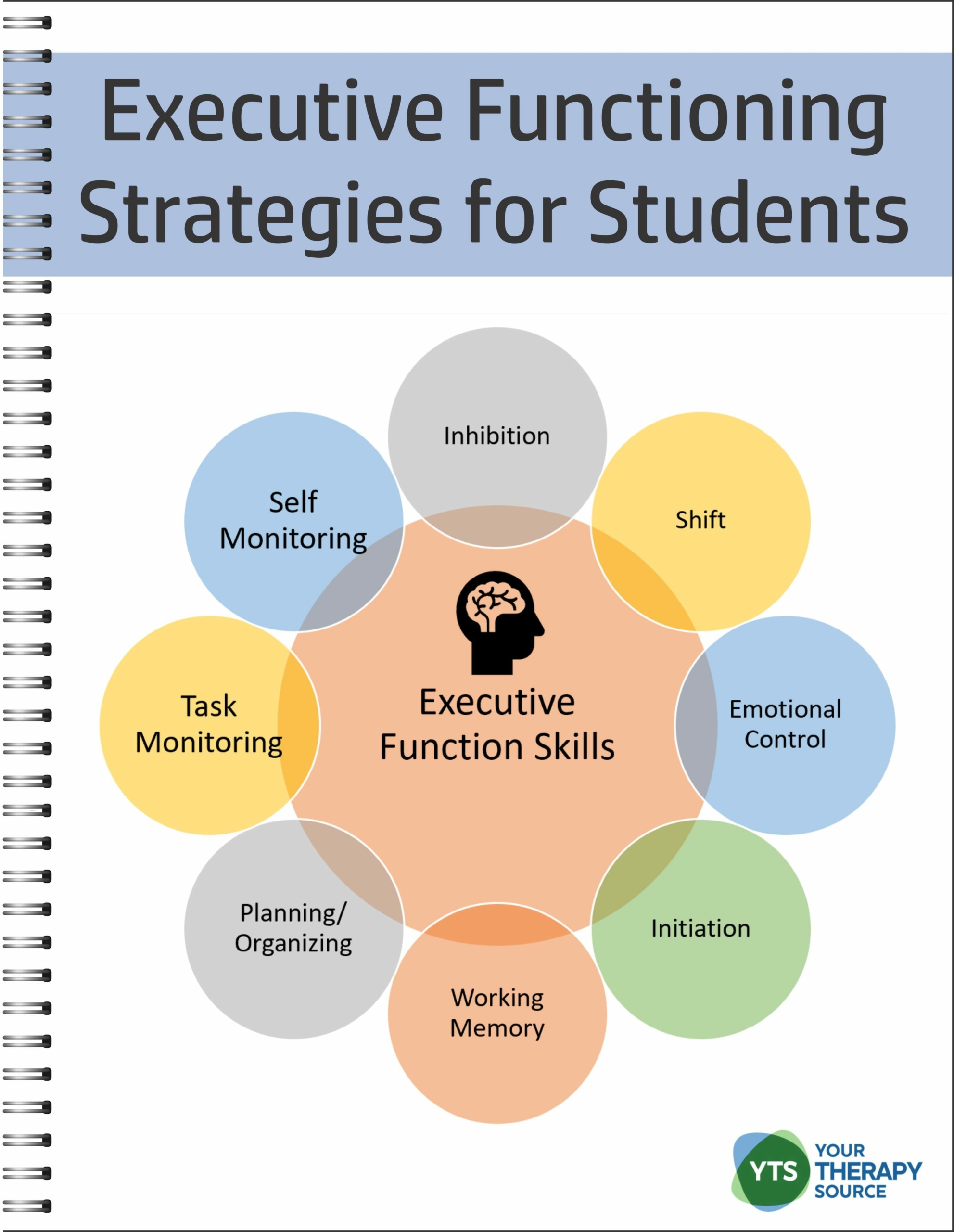
Executive Functioning Strategies for Students
Executive Functioning IEP Goals for ADHD – Emotional Control
Emotional regulation is key for managing reactions and behaviors in both academic and social contexts. Here are specific goals to support emotional control:
- Goal 1: The student will identify and articulate their emotions accurately and seek out adult support in managing intense feelings in 70% of necessary instances, as measured by self-reports and teacher feedback.
- Goal 2: Using coping strategies learned in school counseling, the student will maintain an appropriate emotional response during academic setbacks in 85% of observed instances.
- Goal 3: In situations where the student begins to feel overwhelmed or frustrated, they will use a designated calming technique (such as counting to ten, taking deep breaths, or accessing a quiet space) and successfully calm down within 5 minutes in 80% of such instances, as monitored by classroom aides and teachers.
- Goal 4: The student will participate in role-playing activities during school counseling sessions to practice responding appropriately to peer conflicts, demonstrating an appropriate emotional response in 90% of role-play scenarios by the end of the school year.
- Goal 5: Each week, the student will reflect on one instance where they felt a strong emotion and discuss how they managed it with their counselor or teacher, aiming to use self-regulation strategies independently in at least 75% of the reflections, tracked through ongoing counseling notes and teacher observations.
These goals are crafted to help the student develop better self-awareness and management of their emotions, contributing to more adaptive responses in both academic settings and social interactions.
Executive Functioning IEP Goals for ADHD – Attention Skills
Maintaining attention in a classroom setting is a common challenge for students with ADHD. Here are some SMART goals to support better attention:
- Goal 1: The student will maintain focus on classroom tasks for a period of at least 15 minutes without interruption in 4 out of 5 opportunities, as observed by the special education teacher.
- Goal 2: Using visual and verbal prompts, the student will successfully redirect themselves back to tasks at hand in 80% of instances when they get distracted, as recorded through continuous performance tasks.
- Goal 3: The student will use a designated focus tool (like a fidget device or stress ball) appropriately during lessons to maintain attention, showing effective use in maintaining focus for at least 20 minutes during class activities in 85% of observed instances, as recorded by the special education teacher.
- Goal 4: By the end of the school year, the student will improve their ability to follow multi-step instructions without needing repeated prompts, achieving this in 75% of daily classroom activities, as measured by teacher logs and direct observations.
- Goal 5: The student will engage in short, teacher-directed mindfulness exercises at the beginning of each school day to enhance focus and attention readiness, demonstrating improved task engagement in the first class of the day in 80% of observed days, as noted by classroom teachers and behavior charts.
These goals aim to provide structured support to improve the student’s capacity to focus and sustain attention, crucial for their academic performance and overall classroom behavior.
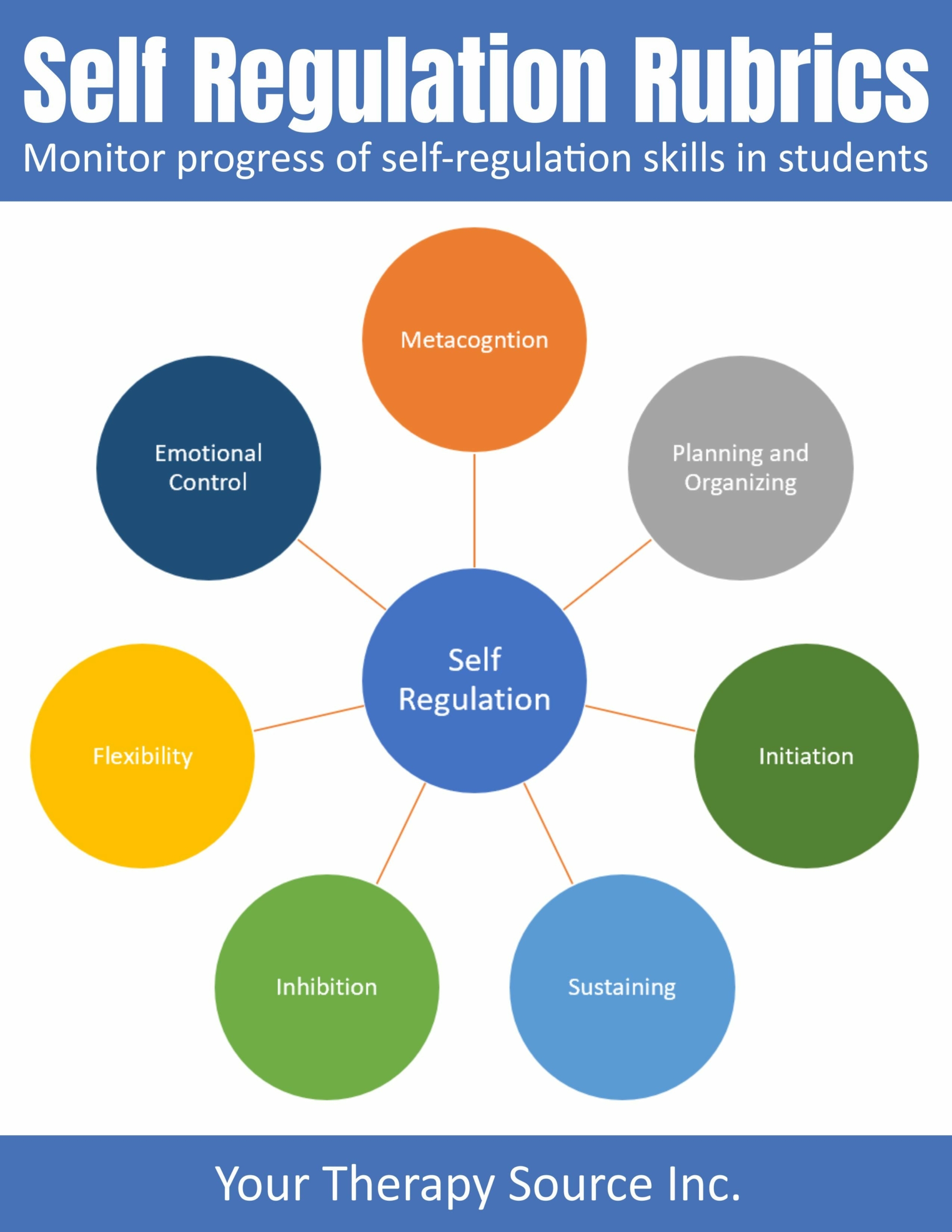
Student Self-Regulation Rubrics
Executive Functioning and Social Skills IEP Goals
Improving interactions with peers through role-playing and direct instruction, aiming for smoother social engagements, is an important functional goal in school.
- Goal 1: The student will engage in group activities and contribute to the group discussion at least three times per session, demonstrating active participation in 80% of group activities over the next quarter, as recorded by the social skills group facilitator.
- Goal 2: By the end of the school year, the student will use a daily planner to schedule and keep track of social commitments (like playdates or group projects), accurately updating and referring to the planner in 90% of instances, as monitored weekly by the classroom teacher.
- Goal 3: The student will practice turn-taking by using a visual timer during conversations with peers, managing to wait for their turn without interrupting in at least 85% of conversational exchanges, as measured by observations during social studies classes.
- Goal 4: Within six months, the student will identify emotions in themselves and others using emotion cards, and use appropriate coping or interaction strategies in response, demonstrating correct identification and response in 75% of role-play scenarios, as observed by the school counselor.
- Goal 5: The student will initiate at least two interactions per day with peers using a pre-taught script or conversation starters, increasing their initiation of social interactions from baseline by 50% by the end of the semester, as tracked by a peer interaction log kept by the homeroom teacher.
These goals are designed to enhance the student’s social interaction capabilities while also strengthening their executive functioning skills, particularly in planning, monitoring, and executing social activities.
Time Management IEP Goals
Students need to learn to estimate and manage time for tasks and completing assignments within set periods.
- Goal 1: The student will use a timer to allocate specific amounts of time for completing individual tasks, successfully adhering to these time limits in at least 80% of tasks, as verified through weekly check-ins with their teacher.
- Goal 2: By the end of the school year, the student will plan their school assignments by breaking down tasks into smaller, manageable steps with set deadlines, achieving adherence to these deadlines in 85% of assignments, as tracked using a task management app monitored by the teacher.
- Goal 3: The student will check their school email and the online class portal daily to keep track of assignment due dates and school announcements, maintaining this routine with 100% compliance over a three-month period, as monitored by the special education coordinator.
- Goal 4: Within the next six months, the student will begin using a written or digital calendar to note important dates (like tests, project due dates, and extracurricular activities), successfully updating and referring to the calendar daily in 90% of the school days, as observed by the homeroom teacher.
- Goal 5: The student will develop the habit of reviewing and adjusting their weekly schedule every Sunday evening to better prepare for the upcoming school week, consistently performing this task with at least 80% accuracy in planning, as noted in a weekly planner review with their academic advisor.
These goals aim to help students gain greater control over their time, allowing them to manage their academic and personal activities more effectively and independently.
Additional Resources
For more detailed information and resources on executive functioning and IEP goals, you might find the following links helpful:
- Executive Functioning IEP Goals
- Free Executive Functioning Activity Worksheets
- List of Executive Functions
- List of Student Strengths and Weaknesses for IEP
- 504 Accommodations for ADHD
- ADHD Goals and Objective Examples
Tailoring the educational approach to the unique needs of students with ADHD through well-structured IEP goals in executive functioning is a strategic step towards enhancing their academic and personal success.
Key Takeaways
Creating effective and measurable IEP goals for students with ADHD is essential for enabling them to reach their full potential. These goals, particularly in the realm of executive functioning, play a crucial role in helping students manage their educational and social challenges. Here are some key takeaways from this exploration of Executive Functioning IEP Goals for ADHD:
- Individual Needs and Tailored Support: It is important for the IEP team, which includes special education teachers, speech-language pathologists, and related service professionals, to customize goals that address the specific needs and challenges of each student. This tailored approach ensures that each student receives the necessary support to overcome their unique difficulties.
- Utilization of Visual Aids and Technology: Incorporating visual schedules, graphic organizers, and assistive technology can significantly aid students in managing tasks and staying organized. These tools help make abstract concepts tangible and provide the structure needed for students to complete assignments effectively.
- Focus on Measurable Outcomes: Setting goals that are specific, measurable, achievable, relevant, and time-bound (SMART) is critical. This approach not only clarifies the expectations but also enables the IEP team to monitor the student’s progress and make adjustments as necessary.
- Empowering Students through Skill Development: Teaching self-regulation and time management skills empowers students to take control of their learning and daily activities. These skills are fundamental for academic achievement and personal growth, allowing students to navigate both academic settings and social interactions more successfully.
- Continuous Evaluation and Adaptation: Regular data collection and progress monitoring are vital. These practices help educators and families understand whether the strategies implemented are effective or if they need to be adjusted. This ongoing evaluation supports sustained learning and adaptation throughout middle school, high school, and beyond.
- Collaboration for Comprehensive Support: The cooperation between teachers, parents, and other professionals is crucial in creating a supportive learning environment. Each party offers valuable insights that contribute to the holistic development of the student.
By focusing on these key aspects, special education teams can set students with ADHD on a path to overcoming their executive functioning deficits and achieving academic and personal success.
